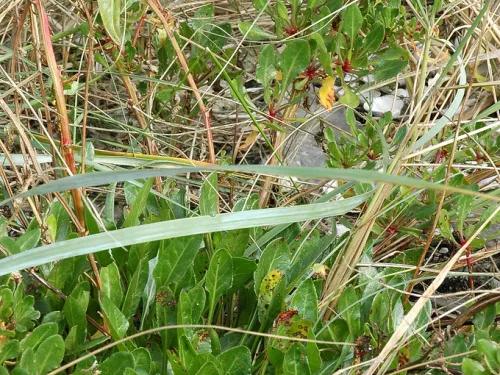Saw-wort
Saw-wort gets its common name from the serrated, saw-like edges to its leaves. It is a plant of unimproved hay meadows and woodland edges, its purple, thistle-like flowers appearing over summer.
Saw-wort gets its common name from the serrated, saw-like edges to its leaves. It is a plant of unimproved hay meadows and woodland edges, its purple, thistle-like flowers appearing over summer.
Did you know your seaside scampi was actually a kind of lobster? Traditionally so - although the scampi that is often eaten with chips can be anything from prawns to fish.
As its name suggests, the scarlet elfcup is a bright red, cup-shaped fungus. It is widespread, but scarce, and can be found on fallen twigs and branches, in shady, damp places.
This brilliant red and white sea slug would make the perfect nudibranch for a Christmas card image or perhaps a football team mascot!
Once considered a weed of cornfields, the Scarlet pimpernel is now in decline due to intensive agricultural practices. It can be found in arable fields, on roadside verges and waste ground, and on coastal cliffs.

This beautiful moth is often found resting on leaves, though it does also fly during the day.
The scorpion fly, as its name suggests, has a curved 'tail' that looks like a sting. It is, in fact, the males' claspers for mating. It is yellow and black, with a long 'beak'. Look for it in gardens and woods.
As the name suggests, this beautiful brown butterfly is most common in Scotland, though it can also be seen in northern England.
The Scots pine is the native pine of Scotland and once stood in huge forests. It suffered large declines, however, as it was felled for timber and fuel. Today, it is making a comeback - good news for the wildlife that depends on it.

Sometimes called 'Wild spinach', Sea beet can be cooked and eaten. It grows wild on shingle beaches, cliffs and bare ground near to the sea, as well as in saltmarshes.
If you happen to be near rocky places such as sea cliffs, shingle coastlines or even gravel paths during the summer months you will most likely come across sea campion.
The sea hare looks like a sea slug – but in fact has an internal shell. They can be up to 20cm long but are usually much shorter.